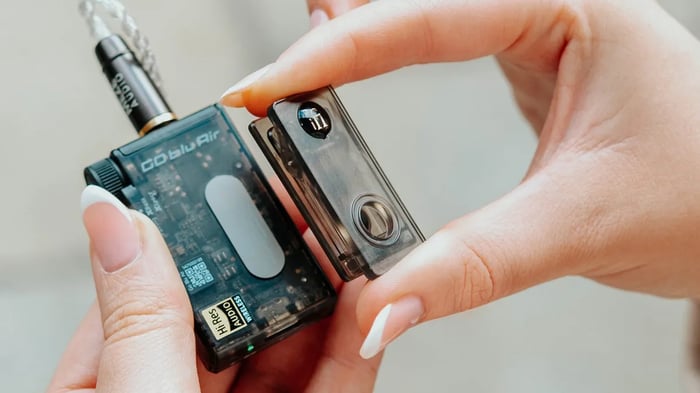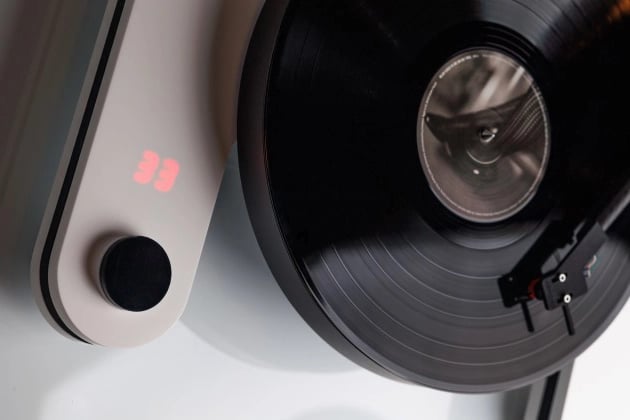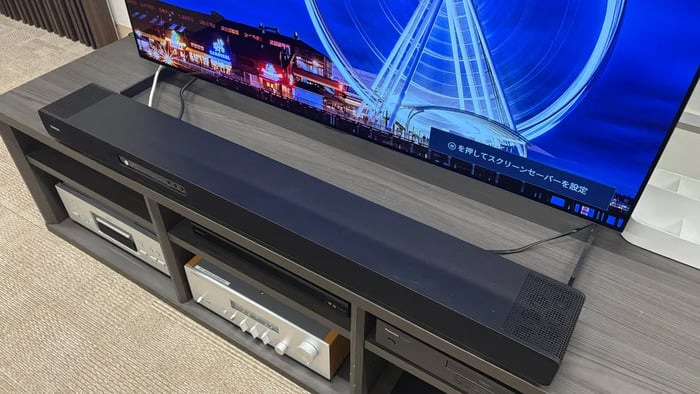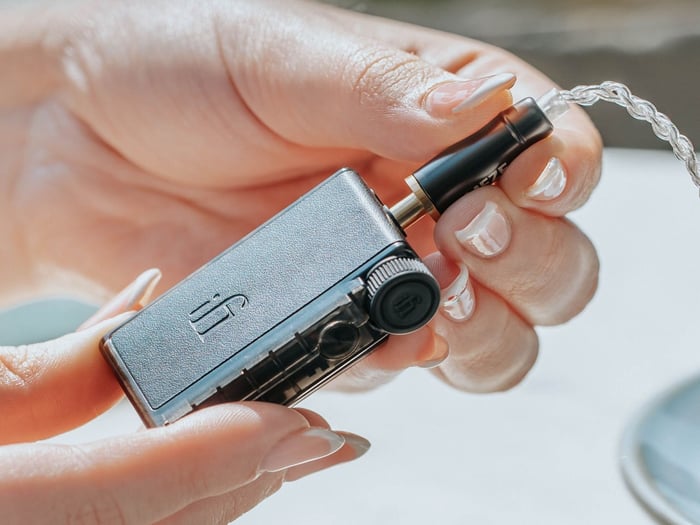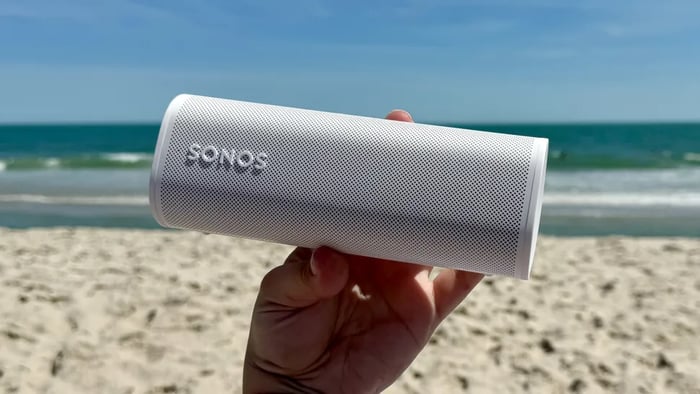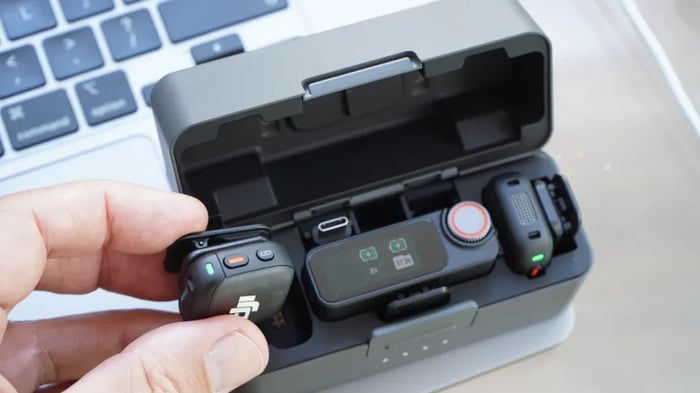
DJI Mic 3 Review: Smaller Yet Mightier Wireless Microphone Powerhouse
DJI Mic 3 Review: Smaller Yet Mightier Wireless Microphone Powerhouse
Explore how the DJI Mic 3 redefines wireless audio with top-tier features and robust performance, perfect for creators seeking premium sound.
Why the DJI Mic 3 Stands Out in Wireless Mic Technology
If you’ve ever dived into the world of YouTube creators or online video production, there's a good chance you've seen DJI microphones in action. DJI has consistently offered two major lines of wireless microphones: the straightforward Mic Mini, a plug-and-play option perfect for phones and some action cameras, and the more feature-packed, professional-grade models—until now, the Mic 2 reigned supreme in that category.
But guess what? DJI just shook things up with the Mic 3. It’s smaller, smarter, and yes, more powerful.
What’s New Inside the DJI Mic 3?
DJI didn’t just slap on a new name and call it a day. The Mic 3 introduces some seriously impressive upgrades. First off, it boasts a built-in 32GB memory—a game-changer for those who hate worrying about storage during shoots.
Then there are the two adaptive gain controls. These little heroes prevent those pesky volume spikes and clipping when you’re in loud environments. Whether you're whispering secrets or belting out a scream, the Mic 3 promises crystal-clear capture, boasting lossless 48kHz/24-bit audio recording straight to the receiver (RX). For the safety-conscious, it also records two separate files simultaneously—one in 24-bit and the other in 32-bit floating-point format.
And that's not all. This mic supports dual-file recording, quadraphonic sound compatible with Sony systems, and timecode functionality—ideal for professional setups.
DJI Mic 3 Pricing and Availability
Starting at £199 (around $245) for a 1 transmitter + 1 receiver bundle, and £259 (about $320) for the full kit with charging case and two mics, the DJI Mic 3 positions itself firmly in the premium wireless mic market.
You can get your hands on it beginning August 28, 2025. It’s clear DJI intends this to be the advanced choice for serious creators—while casual phone users might still favor the Mic Mini.
Key Specs at a Glance
| Feature | Details |
| Range | 400 meters |
| Battery Life | 8 hrs (receiver), 10 hrs (transmitter), 28 hrs (charging case) |
| Storage Capacity | 57 hours (24-bit), 43 hours (32-bit floating point, half for dual files) |
| Connectivity | DJI OsmoAudio™, 3.5mm TRS & TRRS, USB-C |
| Weight | TX: 16 g, RX: 25 g, Case: 164 g |
| Dimensions | TX: 29 x 28 x 16 mm (with magnet) |
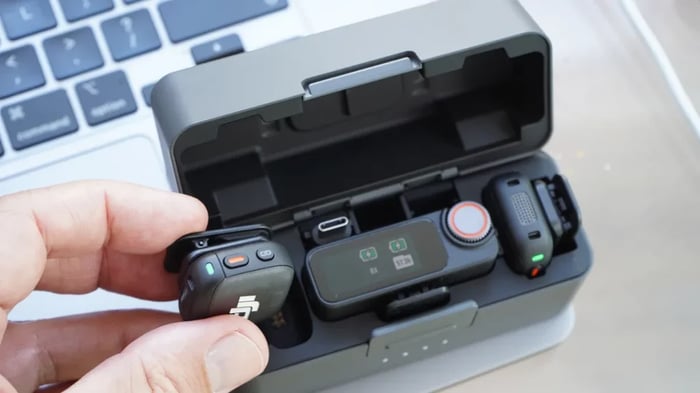
Design and User Experience
The Mic 3 looks as solid as ever, dressed in a premium metal charging case that feels built to last. The front latch secures the mics during transport, reminiscent of the Mic 2's reliable design. Below it, tiny LED indicators keep you posted on battery levels while charging via the USB-C port tucked neatly at the back.
The charging case is slightly larger than the earlier 2TX version I tested, which is a blessing. It houses small magnets inside the lid that help secure the mic to your clothing—no need to fuss with removing the furry windshield (or "dead cat") unless you want to.
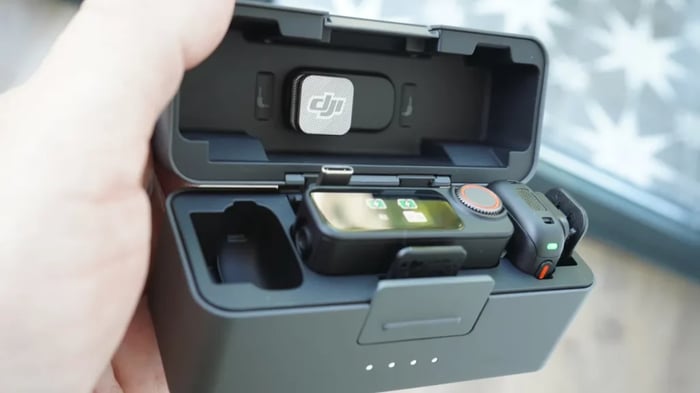
Interestingly, the transmitter no longer supports external lavalier mics, a feature the predecessor had via a retro-style tie clip connector. DJI seems to have embraced the idea that the built-in mic is so compact and effective, adding external mics is almost redundant—especially since the included clip and magnet mounting options work so smoothly.
Opening the case reveals the transmitter(s) and the receiver (RX), the latter being a versatile unit compatible with phones, cameras, or any device with compatible inputs.
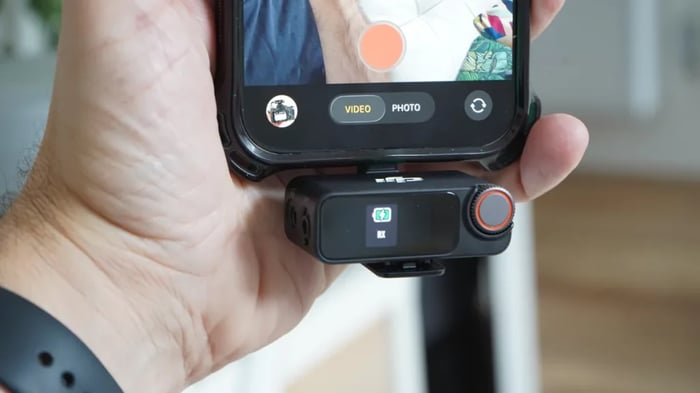
The RX sports a crisp OLED screen on its back, allowing you to adjust clocks for metadata accuracy—critical when syncing audio to video. It also supports timecode settings for advanced editing workflows.
At the base of the RX, a sliding mount accepts either a camera shoe clip or a USB-C connector, enabling real-time connection to iPhones or other compatible devices. The device features a headphone monitor and output port on one side, plus a power button and a nifty mechanical lock button on the other, preventing the mount from getting stuck—a thoughtful touch for on-the-go creators.
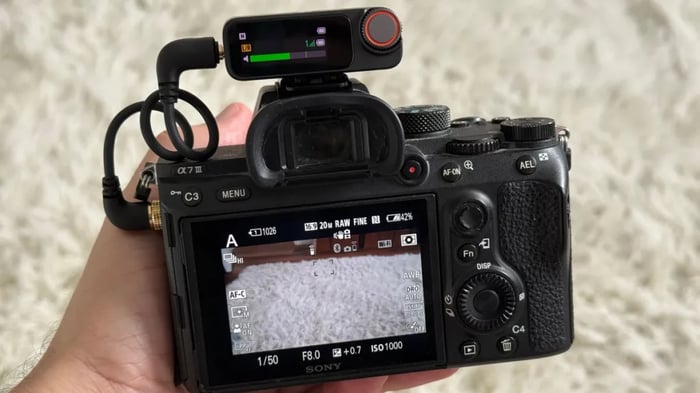
One of my favorite features: if you’re not recording audio directly through the camera or phone, the Mic 3 automatically stores the sound in its internal memory. Plug it into your computer via USB-C, and you’ll find your .wav files waiting—just be sure to set the internal clock to avoid metadata confusion.
This process did occasionally hiccup on my Mac (likely an OS issue), but disconnecting and reconnecting the mic fixed it promptly—just like plugging in any external drive.
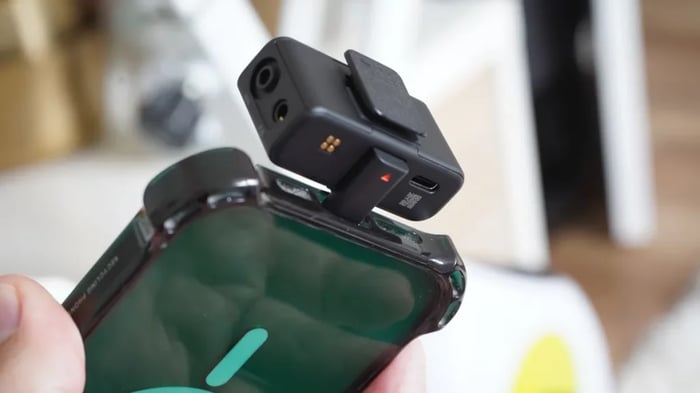
Performance That Impresses
If you’re coming from the Mic 2, the Mic 3's stellar sound and signal hold won’t surprise you—but it's worth highlighting. The dual-band system kept interference at bay throughout my tests.
The USB-C port on the receiver also doubles as a handy way to plug into my Mac and use the mic as a computer microphone, which was incredibly convenient.
I mainly tested it by recording video clips on my phone and camera, but the real litmus test came when I recorded my fiancée, a session vocalist with extensive experience (she even sang with Duran Duran!). This proved the mic’s claimed dynamic range: from deep lows to shimmering highs, distortion was nearly nonexistent.
Noise cancellation did slightly color the sound when enabled in a quiet room, but it efficiently blocked out the hum of a running washing machine during another test. My advice? Use noise reduction sparingly—it’s good, just be mindful of the subtle trade-offs in sound quality.
Battery charging speed was impressive, too. Leaving the transmitters and receiver charging in the case during breaks and overnight meant I could rely on them all weekend without a hiccup.
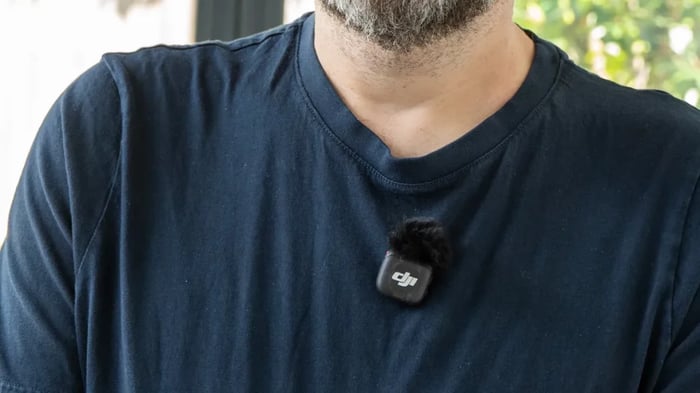
Final Verdict on the DJI Mic 3
For anyone familiar with the previous DJI wireless mics, the Mic 3 won't come as a shock, but it does introduce some welcome refinements. The addition of the unlock button on the receiver means there's no risk when switching between USB-C and camera mounts — a small but appreciated detail.
The expanded internal memory and premium touch OLED screen elevate the overall experience—it feels more sophisticated and versatile than before. The 32-bit floating-point recording offers substantial headroom for fixing peaks in post-production, though I didn’t personally need to dip into that much.
DJI also expanded the mic’s capabilities with features like timecode support, making it a perfect fit for solo creators and small video teams alike.
At its core, the Mic 3’s fundamental job—capturing pristine audio—has become even better. Its sound quality is top-notch, its safety features provide peace of mind, and the generous recording time allows for multiple days of uninterrupted capture. Hard to argue with that.
| Category | Rating | Notes |
| Features | ★★★★★ | Packed with memory, power, and extras like quadraphonic playback |
| Design | ★★★★☆ | Sturdy, almost metallic-feeling hard case with smart accessory storage |
| Performance | ★★★★☆ | Near-flawless audio and solid connection with reliable charging |
| Value | ★★★★☆ | Not cheap, but probably the smartest, most elegant choice in its category |
The Mic 3’s quality and well-thought-out features make it a standout tool for creators who demand the best wireless sound.
FAQ
- What devices are compatible with the DJI Mic 3?
The Mic 3 works with smartphones (via USB-C), cameras with hot shoe mounts, and any recording devices that support 3.5mm TRS or DJI OsmoAudio connections. - How long can I record continuously with the Mic 3?
You can record up to 57 hours in 24-bit mode or 43 hours in 32-bit floating point mode, thanks to the internal memory. - Does the Mic 3 support multiple microphones?
Yes, the kit includes two transmitters, and adaptive gain control helps balance audio levels from multiple sources even when using a single mic for two speakers. - Can I use the Mic 3 as a computer microphone?
Absolutely! The receiver's USB-C connectivity allows you to plug it into your computer and use it as a high-quality mic for calls or streaming. - Is the built-in noise cancellation effective?
Yes, it handles background noise well but can slightly affect sound quality, so it’s best to use it only when necessary.
Enjoy the crisp, clear sound of your favorite tracks or recordings? Take the vibe further by shopping for your favorite album cover posters at our store—perfect for any music or creator’s sanctuary. Browse now.
 | DISCOUNTGET 30% OFF*Use code on your next order:
|
* This post may contain affiliate links, meaning we earn a commission if you make a purchase through these links, at no additional cost to you.



